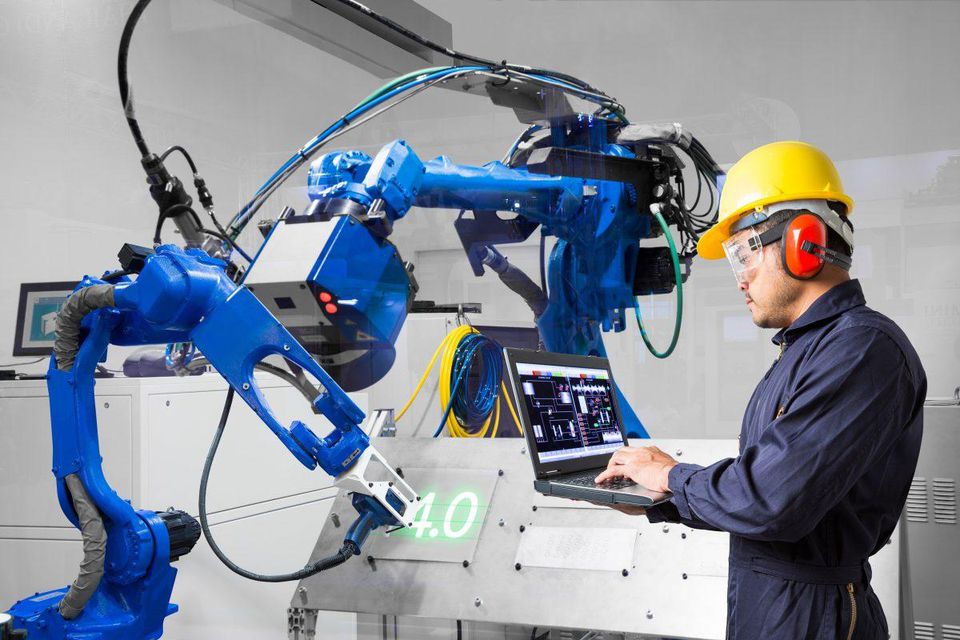Before we can explain what are the advantages and disadvantages of robotic automation, we need to confirm its definition and debunk any myths shrouding the technology. Robotic automation doesn’t necessarily mean a setup for a cyberpunk dystopia. It simply means using robots with artificial intelligence to complete tasks that are repetitive and mundane to humans.
Automation isn’t restricted to virtual activities alone; it ranges from software tasks that may not need a physical robot to highly complex physical tasks that require a physical robot. Software automation focuses on streamlining business processes; the three most common ones are Business Process Automation, Robotic Process Automation, Intelligent Process Automation.
Industrial automation involves a different kind of approach where the physical processes are carefully programmed and controlled, it can be very efficient and sophisticated. A fully autonomous factory exists, completely run by robots. In this day and age, it’s unwise to not consider using robotic automation for your business, which is why we’ll be demonstrating the pros and cons of taking such a step.
IMAGE: PIXABAY
PROS
Less Mundane Tasks
There is no shortage of mindless and mundane tasks that take a huge part of a worker’s time and energy. For this to be considered an advantage, replacing robots to do the mundane work has to be contrasted with finding better and challenging tasks for the workers replaced. This may help improve the conditions of work and reduce stress if done right; tools may be changing, but the need to create things with these tools is still the same.
Safety
This is one of the strongest points that make using robotic automation very compelling on an industrial level. Environments with extreme heat, cold, and different dangerous weather conditions can be a cause of danger and stress for humans to work in. Robots aren’t only operating with ease under such conditions, they are also able to handle toxic and dangerous materials, completely removing the risk of endangering workers in the workplace.
Resolve Labor Shortage
There is a worldwide deficit of skilled workers in specific industrial fields; these fields require years of training, making the flux of skilled works tighter than other fields. The rising wave of technologies like robotics, artificial intelligence, and big data has played an essential role in the constant improvement of manufacturing automation to a highly dependable degree. Some of the most sophisticated roles can be done by robotic automation in different sites, plants, and factories.
Productivity And Efficiency
Robots don’t need to take a lunch break, a cigarette break, a fiver, or a breather. They simply never get tired as they are completely automated machines. Robots can stay running 24/7 for days and weeks except when they are being stopped for a few hours of maintenance. The increase in productivity is noticeable in the first few days. They can be more efficient than humans at completing automated tasks require 100% precision and accuracy.
CONS
Expensive Initial Cost
Robotics is considered a recent addition to the industrial process. The cost of development and innovation in AI and software, in general, is reflected in the initial cost of obtaining the equipment needed for robotic automation. It’s still a great investment as they save a lot of expenses in the long run for the businesses that can handle the initial cost.
Low Adaptability
The robotic automation and AI technology are in a constant state of innovation and improvement, but they still heavily lack in certain aspects. Maladaptation to new changes in the work environment makes them of limited capabilities in certain industries. While robots of advanced AI may handle minor changes as well, most of these robots cannot handle and learn about situations that are out of their coded and meshed network of rules.
Labor Disruption
We mentioned before that robots can do some tasks better than humans, and that means that they can be used to displace workers from the workforce. When the business is unable to provide other tasks that require creativity and adaptability, workers may get the short end of the stick. This can cause a disruption of the hiring process and a lot of layoffs that could turn into a litigation mess.
New technology is dawning upon us, but it comes with its own challenges. Using robotic automation right can make a serious difference in how your industrial business operates. Making the decision isn’t going to be easy as a structural change of that level is bound to cause some chaos and disruption.
A lot of research has to be done in order to implement robotic automation in a way that maximizes the efficiency and productivity of a company. Looking objectively, the pros are outweighing the cons and the technology will keep improving until it becomes a huge marvel of human achievement.
If you are interested in even more technology-related articles and information from us here at Bit Rebels, then we have a lot to choose from


COMMENTS